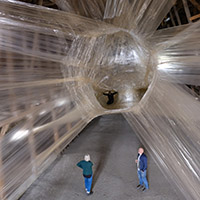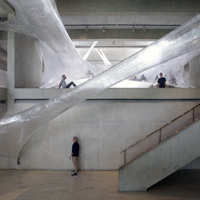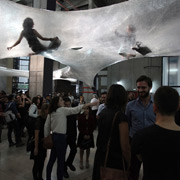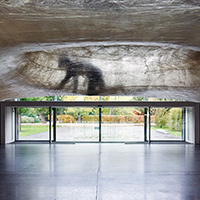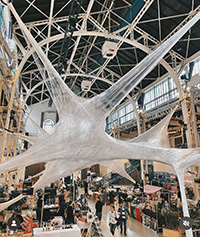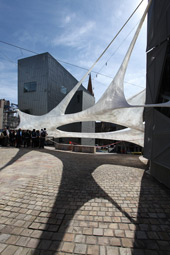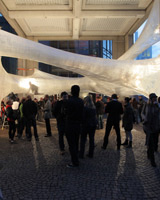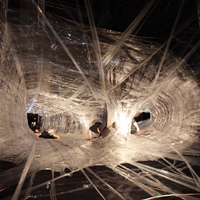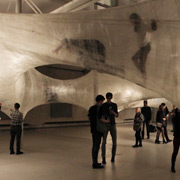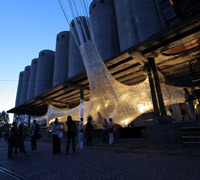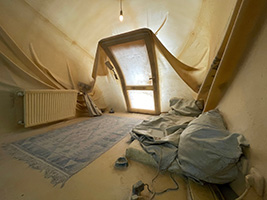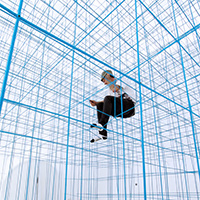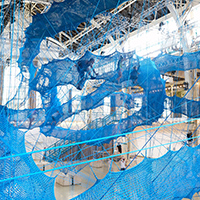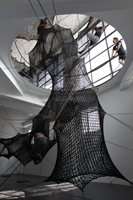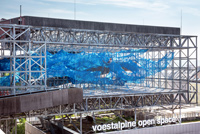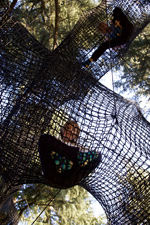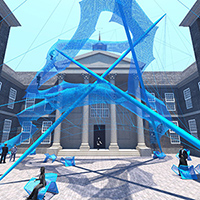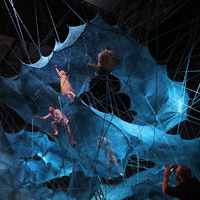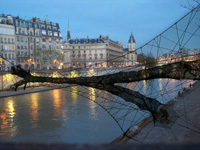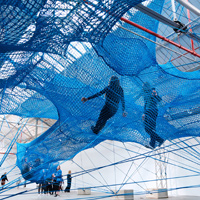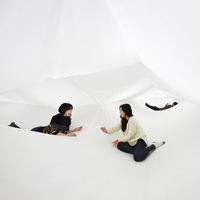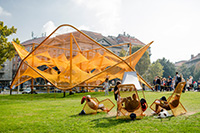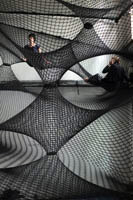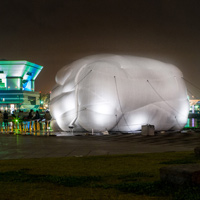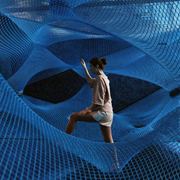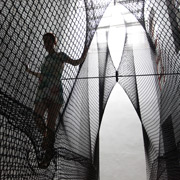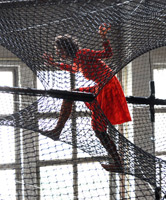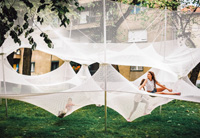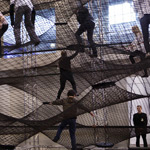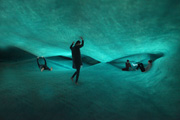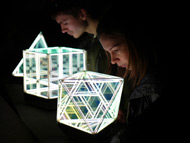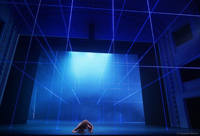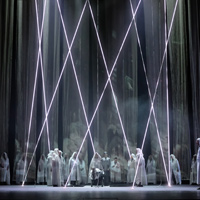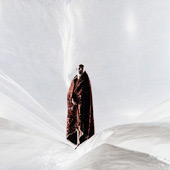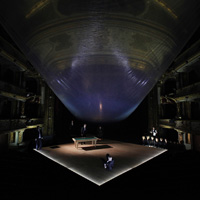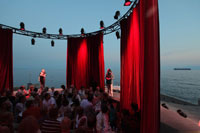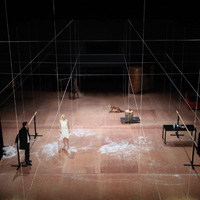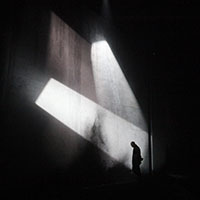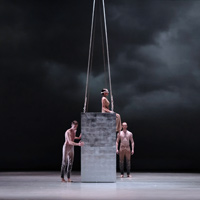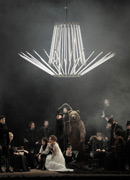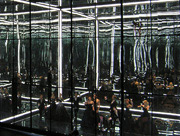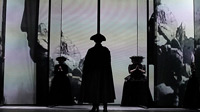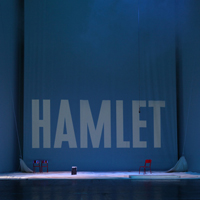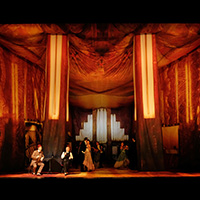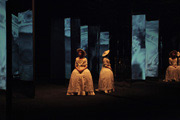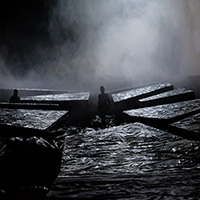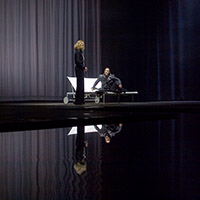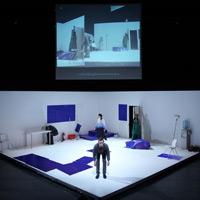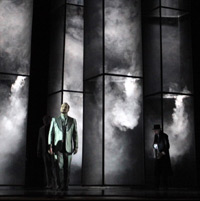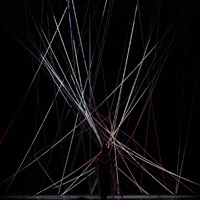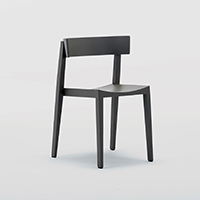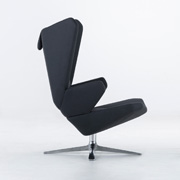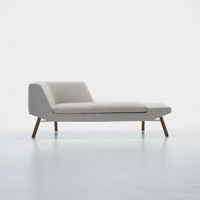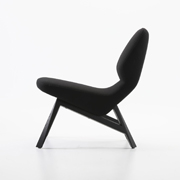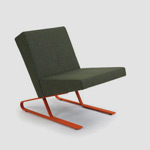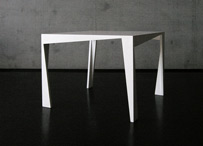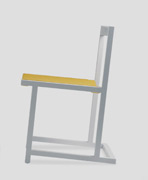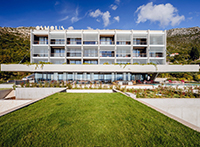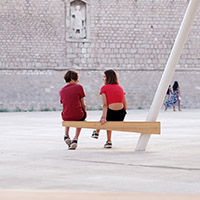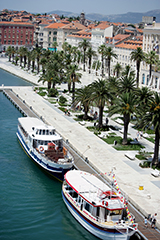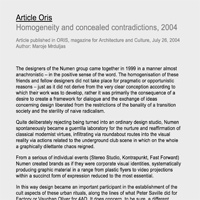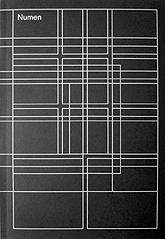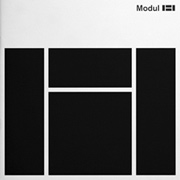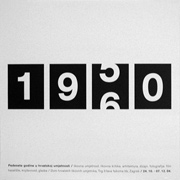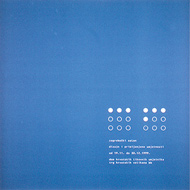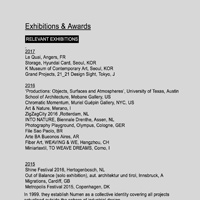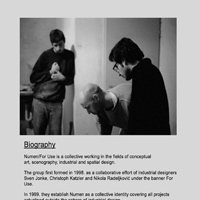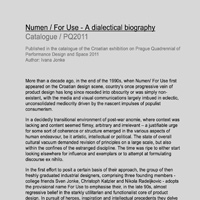Writer: Josip Kosor
Director: Paolo Magelli
Scenography: Numen + Ivana Jonke
'The Woman' and 'In Café du Dôme', two novels by a Croatian expressionist Josip Kosor, written in the 1920s, are fused together to form a singular piece revolving around a central theme of a woman’s plight in the patriarchal and early capitalist world. Dramatisation treats the novels as two successive episodes in the life of the Woman, separated in two acts, first set in a generic Dalmatian tavern and the second in the eponymous Parisian café frequented by bohemians and demimonde at the dawn of the Great War.
In Act 1, during a dark and thunderous stormy night by the sea, a man loses his wife in a game of dice to his lifelong opponent and detested rival. She in return slithers onto the stage all insect-like and black-clad, a chthonic creature of vengeance, entirely absorbed in the harsh and bitter denunciation of menfolk. The tone of the whole act is melodramatic and exulted, bordering on hysterical, with a constant feeling of pressure and impending doom coming from the overwhelming weather. To underline this expressionist quality we designed a set which brings a night storm into the very body of the theatre. This we achieved by suspending a huge plastic foil from the centre of the stage over the entire audience area, to the level of the second gallery seats, and then using it as a platform for recreation of atmospheric effects such as incessant rainfall, sea waves, wind and mist. The grandiose rippling surface amplifies the sounds and presses upon the audience with existential burden, a sense of mystery and cold dread. The stage is otherwise empty, safe for a single wooden pool table. Another crucial element of this design is the massive triangular extrusion of the stage area all the way into the fifth row of seats. The intervention draws the actors forward, into a ring surrounded by viewers, and this immediacy of acting, with every facial twitch and gesture displayed at arm’s length, is essential for truly expressionist theatre.
At the end of Act 1, there is a controlled release of the plastic foil against the cables which kept it stretched. Once the foil is down, the rotating stage starts moving slowly to complete a 180 degree turn. The cables now form a towering X above the audience, plastic foil disappears from view and a crescent shaped red sofa takes the centre stage. A set of bulbs light up in the back to suggest a Parisian nightscape. The stage is ready for Act 2.
At the end of the play, a huge balloon of black plastic foil is slowly inflated from the back until it engulfs the sofa and breaks into the proscenium, swallowing everything in its track.
The making-of

